Genetic engineering – the experimental process of manipulating an organism’s genetic core (DNA) – including insertion of genes from one species into another – is one of the most polarizing issues in medicine and in food production. Genetically engineered (GE) a.k.a. genetically modified/manipulated (GM) food crops are hailed by its proponents as the solution for overcoming the world’s food shortages; but denounced by others as an example of scientific overreaching, a dangerous gamble of “genetic roulette” – with unknown, potentially catastrophic consequences. (Genetic Roulette: The Gamble of Our Lives by Jeffrey Smith, 2012)
 Genetically engineered food products were approved by the Food and Drug Administration (FDA) without scientific evidence of their safety. GMOs are distributed into the food supply without any post-marketing safety surveillance; and without identifying labels. U.S. policy has deliberately kept consumers ignorant about the foods they are consuming. US food policy defers safety issues entirely to the discretion of the biotech agrichemical industry. The safety of GE foods is only tested if companies voluntarily choose to do the testing! This reckless policy contrasts sharply with policies adopted in all other developed countries.
Genetically engineered food products were approved by the Food and Drug Administration (FDA) without scientific evidence of their safety. GMOs are distributed into the food supply without any post-marketing safety surveillance; and without identifying labels. U.S. policy has deliberately kept consumers ignorant about the foods they are consuming. US food policy defers safety issues entirely to the discretion of the biotech agrichemical industry. The safety of GE foods is only tested if companies voluntarily choose to do the testing! This reckless policy contrasts sharply with policies adopted in all other developed countries.
Consider for a moment…
If genetically engineered (GE) / genetically modified (GM) food products were safe, healthy and beneficial for those who consume them wouldn’t producers of processed food products proudly identify foods that contain GMOs?
The fact is GE food products are not labeled in the US because the agrichemical industry has fought tooth and nail against requirements to identify GM food. What’s more, the US government shields the industry from being required to provide accurate information in plain English about the biotech production source of foods on grocery shelves. Meanwhile the magnitude of worldwide resistance against GE/GM foods is escalating in response to safety concerns about the alarming widespread exposure to glyphosate-based herbicides. Since Monsanto’s Roundup Ready GMO crops were widely adopted in the US, the use of glyphosate has skyrocketed.
As of 2016, the cultivation of GE crops is banned in thirty eight countries including, 19 European countries: Germany, France, Italy, Austria, Scotland, Belgium, Denmark, Greece, Russia, Ukraine, Poland, and the Netherlands… GE/ GMO labels are mandatory in 64 countries – including all 28 European Union countries, Japan, Taiwan, Australia, Indonesia, New Zealand, South Korea, South Africa, China… (International Labeling Laws, Center for Food Safety)

What are these companies so invested in concealing from US consumers?
Answer: Evidence from an independent, FDA-registered food testing laboratory has documented alarming high levels of the herbicide glyphosate residues in America’s most popular food brands and in human urine, breast milk, and blood. New scientific evidence shows that probable harm to human health could begin at ultra-low levels of glyphosate e.g. 0.1 parts per billions (ppb). Popular foods tested for glyphosate measured between 289.47 ppb (Oreo Cookies) and at levels as high as 1,125.3 ppb. (Cheerios) (Food Democracy Now, “Glyphosate: Unsafe on Any Plate” 2015)
Scientific Fact: In natural reproduction, the genes from parents are transferred vertically to the offspring of the same species. Genetically engineered organisms are produced using an entirely different process, called Recombinant DNA Technology, which uses horizontal gene transfer. This process involves crossing species barriers and transferring a gene from bacteria and inserting it into a recipient plant or animal; thereby altering that plant’s DNA.
“Horizontal transfer of transgenic DNA has the potential, among other things, to create new viruses and bacteria that cause diseases and spread drug and antibiotic resistance genes among pathogens…that make infectious diseases untreatable.”
“…the biosphere is being exposed to all kinds of novel constructs and gene combinations that did not previously exist in nature, and may never have come into being but for genetic engineering. (Horizontal Gene Transfer – the Hidden Hazards of Genetic Engineering, Mae-Wan Ho, Institute of Science in Society, 2000)
The World Health Organization (WHO) defines genetically modified food (GMO) as:
“organisms (i.e. plants, animals, or microorganisms) in which the genetic material (DNA) has been altered in a way that does not occur naturally by mating and/or natural recombination… Different GM organisms include different genes inserted in different ways. This means that individual GM foods and their safety should be assessed on a case-by-case basis and that it is not possible to make general statements on the safety of all GM foods.”
The conditions and known biological ‘rules’ that apply to vertical gene transfer do not necessarily apply to horizontal gene transfer.
“What biotechnology and biotech corporations like Monsanto have done, is they have allowed for the transfer of genes from one species to the other without any regard for the biological limitations, or constraints. … Biotech science today is based on the assumption that the principles governing the inheritance of genes are the same when we move genes horizontally as they are when they are moved vertically.” (“Confirmed: DNA from Genetically Modified Crops Can Be Transferred to Humans Who Eat Them,” Arjun Walia, Collective Evolution, 2014)
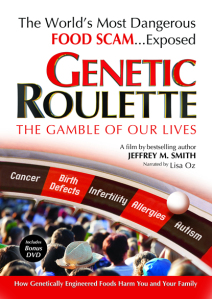 The safety of naturally produced food has been proven for thousands of years; whereas genetic engineering technology is a new field.
The safety of naturally produced food has been proven for thousands of years; whereas genetic engineering technology is a new field.- The first genetically engineered food that entered the US market surreptitiously in 1993, was BST milk from cows injected with Bovine Growth Hormone (BGH) and antibiotics.
- Genetically engineered plants and animal products entered the US food supply in 1996 without undergoing safety tests; with no identifying label, no public debate or discussion, and no post-marketing monitoring.
- The safety of GMOs is a matter of ongoing heated controversy.
- There is no consensus among scientists about what the long term health effects will be.
- The Food and Drug Administration (FDA) endorsed industry’s specious claim that genetically engineered crops are “substantially equivalent” to naturally cultivated crops that are long proven safe.
- FDA gave the biotechnology industry – primarily Monsanto – a green light to market its genetically pesticide coated seeds without scientific documentation of their safety, and without any identifying labels — intentionally concealing vital information from the American public.
Genetic engineering technology is a new field
Because the GMO process deviates from natural reproductive processes; breaching species barriers, uncertainty prevails. There’s still a lot we don’t understand about gene expression. Uncertainty exists about what outcomes this new uncharted technology might lead to – especially the possibility of unintended adverse consequences. This uncertainty about the long-term consumption of artificially engineered foods has never been put to the test. GMOS have never been proven safe, which is why all European countries and other developed countries have adhered to the “precautionary principle” and rejected genetically engineered food until proven safe.
The US policy and approval process for GE food contrasts sharply with Western European countries where concerns about potential safety hazards were publicly debated. Europeans were especially wary in light of the decade long (1990s) disastrous epidemic of mad cow disease (Bovine spongiform encephalopathy) that had caused the death of at least 177 people. As a result, most European (as well as Asian) governments followed the precautionary principle by establishing rules that err on the side of caution to ensure safety of health and the environment; and to ensure consumer choice. The cultivation of GE crops was initially banned by 19 of 28 European countries — including Germany, France, and Italy; they were banned in 37 countries worldwide. (European & American Views on GM Foods, Orsolya Ujj, The New Atlantis, 2016)
 The precautionary principle stresses scientists’ social responsibility to do science that protects human health and the environment, and requires industry to prove beyond reasonable doubt that a technology or a product is safe before it can be adopted. As defined by the National Center for Biotechnology Information, the precautionary principle in environmental science has four central components:
The precautionary principle stresses scientists’ social responsibility to do science that protects human health and the environment, and requires industry to prove beyond reasonable doubt that a technology or a product is safe before it can be adopted. As defined by the National Center for Biotechnology Information, the precautionary principle in environmental science has four central components:
“taking preventive action in the face of uncertainty; shifting the burden of proof to the proponents of an activity; exploring a wide range of alternatives to possibly harmful actions; increasing public participation in decision making.”
FDA deviated from the precautionary principle in violation of its statutory obligation under the US Food Additive Amendment (1958) of the Food Drug & Cosmetics Act (21 USC Sec. 321).The new US policy for GE/GM plant and animal products was introduced by then Vice-President Dan Quayle as a deregulatory initiative, at a press conference attended by agrichemical industry officials on May 28, 1992. The new FDA policy for GE food products was crafted by Michael Taylor, a lawyer who worked on behalf of Monsanto, who was appointed FDA Deputy Commissioner; and later became Vice President of Monsanto. Taylor classified genetically engineered food products as “substantially equivalent” to conventionally produced foods; disingenuously asserting that “the new techniques [e.g. genetic engineering] are extensions at the molecular level of traditional methods and will be used to achieve the same goals as pursued with traditional plant breeding.”
During his tenure as FDA Deputy Commissioner, all references to FDA’s scientists’ concerns about potential adverse effects of bioengineering were deleted from subsequent drafts of FDA’s policy statement. (“Why FDA’s Policy on Genetically Engineered Foods is Irresponsible and Illegal,” Steven Druker, JD, 2011) [Read: How Monsanto Rigged the System]
The FDA endorsed industry’s specious claim that genetically engineered crops are “substantially equivalent” to naturally cultivated crops that are proven safe. Genetically engineered plant and animal products – such as pesticide coated seeds and milk from cows injected with bovine growth hormone – were approved by the FDA without scientific evidence of their safety. GMO safety testing was left to the discretion of producers who voluntarily provide information to FDA officials at “voluntary safety consultations.”
American consumers became de facto guinea pigs
FDA’s public assertion that “foods from GE plants must meet the same food safety requirements as foods derived from traditionally bred plant” is grossly misleading. Under the 1992 policy, exempted biotech produced foods from regulatory safety testing requirements. The FDA does not test the safety of GE food; nor does it certify that these foods are safe. Here’s how the “safety dance” is played:
FDA policy analyst Jason Dietz explained:
“It’s the manufacturer’s responsibility to insure that the product is safe. It’s their safety assessment.”
The FDA does not use its authority to require safety tests “…companies are supposed to do a voluntary consultation [to share information companies choose to share with FDA].”FDA rubber stamps new GE food products with the statement:
“It is our understanding that Monsanto has concluded this is safe.”
(Seedy Business Excerpt, 2012; “The GM Safety Dance,” Grist, 2013)Monsanto’s Director of Corporate Communications Phil Angell told the New York Times in 1998: “Monsanto should not have to vouchsafe the safety of biotech food. Our interest is in selling as much of it as possible. Assuring its safety is the FDA’s job.” (cited by Wayne Barrett. The Nation, 2012)
This dishonest and deceptive government policy overrode the fundamental human rights of the American people by conscripting them – without their knowledge or consent – as human subjects in a vast, uncontrolled commercial human experiment. When the FDA violated its statutory responsibility, and chose not to monitor the safety of genetically engineered plants, animals and other organisms – either before or post-marketing – American consumers became de facto guinea pigs on whom the safety of GMO products are tested. 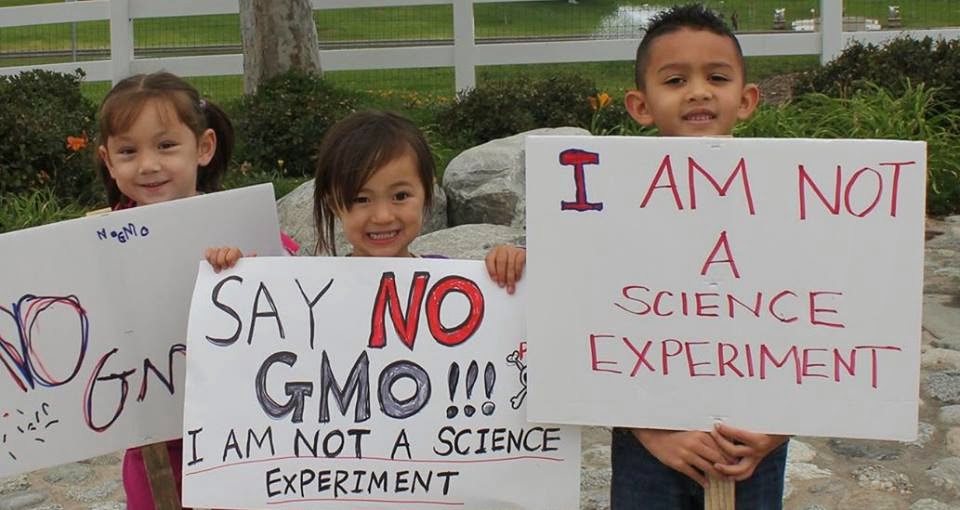
The truth is, no one really has an idea of what the long term health effects of GMOs will be.
“By slipping [GMOs] into our food without our knowledge, without any indication that there are genetically modified organisms in our food, we are now unwittingly part of a massive experiment.” Canadian geneticist, David Suzuki
“There is a sad history of us acting as guinea pigs for the novel chemicals that industry develops. For this we have all too often paid with our damaged health. Rarely is that damage instantaneous, but it’s safe to say that novel biotechnologies broadly deployed may well have unexpected consequences.” (“Stop Making Us Guinea Pigs,” Mark Bittman, The New York Times, March 2015)
Is it not irresponsible for the FDA to endorse a long term, open ended, uncontrolled experiment conducted on the general US population?
Are GE foods a contributing factor to the poor health profile of the US population?
A pervasive pattern of shorter life span, poorer health, and a rise in serious chronic illnesses – heart disease, cancer, diabetes, and obesity – afflict the US population in far greater proportion than all other high-income nations. The U.S. performs poorly on several important determinants of health: highest prevalence of diabetes and obesity; 33.8% of adults in the US were obese in 2012, twice the average rate of its “peers”. The Institute of Medicine (IOM) report concluded that poorer health in the U.S. was not simply the result of economic, social, or racial and ethnic disadvantages—even well-off, nonsmoking, non-obese Americans are in worse health than their counterparts abroad. (Institute of Medicine (IOM) Report, 2013; Commonwealth Fund Report, 2015)
Underscoring blatant corporate-influence was noted in an editorial of the premier scientific journal, The Lancet (1999):
“it is astounding that the US Food and Drug Administration has not changed their stance on genetically modified food adopted in 1992… FDA has not found it necessary to conduct comprehensive scientific reviews of foods derived from bioengineered plants… despite good reasons to believe that specific risks may exist.
For instance, antibiotic-resistance genes are used in some genetically modified plants as a marker of genetic transformation. Despite repeated assurances that the resistance genes cannot spread from the plant, many commentators believe this could happen. Of greater concern is the effect of the genetic modification itself on the food.”
The FDA deviates fundamentally from a credible science-based policy
US statute requires the FDA to require scientific evidence to back up the approval of new food products. The FDA deviated from its statutory responsibility and adopted instead, a “policy-based evidence” approval process which relies on industry’s voluntary trials whose research findings are tainted by financial conflicts of interest and methodological corruption. The data is inaccessible for independent review; it is declared proprietary and is never disclosed. The Department of Agriculture (USDA), and Environmental Protection Agency (EPA) also accepted industry’s biased safety assurance in the absence of science. [[The FDA Modernization Act of 1997 similarly speeded up FDA’s prescription drug approval process.]
Contrary to the blatantly false claims made by industry’s chorus of sycophants whose intent is to mislead the public with assurances of a scientific consensus about the safety of GE foods,
“there is not now nor never has been a consensus within the scientific community that GM foods are safe, [ ] many well-credentialed experts do not regard their safety as having been established, and [ ] a substantial number think that the research as a whole casts the safety of many of them in doubt.” (“Why FDA Policy on GE Foods is Irresponsible and Illegal,” Steven Druker, GM Watch News, 2015)
On the contrary, a body of scientific evidence by independent scientists raises serious safety concerns:
“Biotech science today is based on the assumption that the principles governing the inheritance of genes are the same when we move genes horizontally as they are when they are moved vertically… The problem with this is that it is based on very bad science… GMO’s should be subjected to much more experimentation and rigorous research before we continue to consume them.” (Arjun Walia, Collective Evolution, 2014)
FDA malfeasance documented in Internal FDA memos
FDA documents expose the fact that FDA “broke the law and lied about the facts.” Forty thousand secret FDA documents expose the lie underlying FDA’s official assertions that GMO are “substantially equivalent” to conventionally produced foods, and that their “proven safety is grounded in science.” The documents were uncovered during legal proceedings initiated by attorney Steven Druker on behalf of the Alliance for Bio-Integrity in 1998. Druker assembled an unprecedented coalition of scientists and religious leaders who stood with the Alliance as co-plaintiffs. It was the first time that scientists had sued a federal administrative agency on the grounds that one of its policies is scientifically unsound. 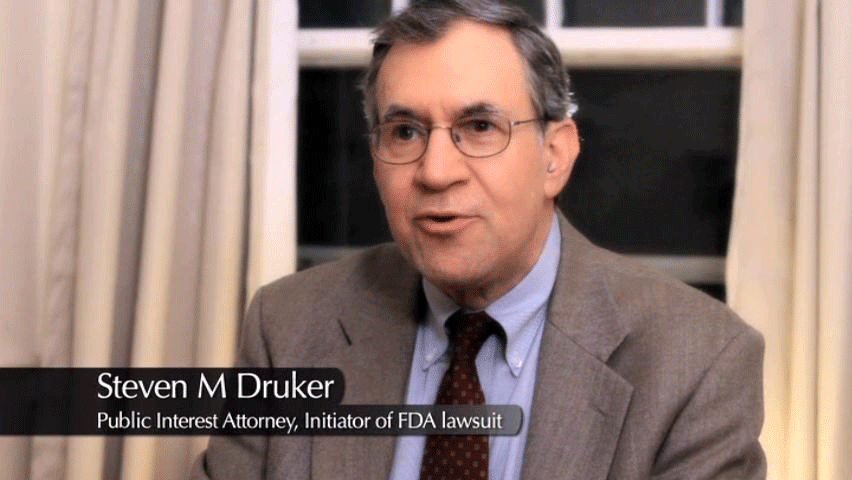
The secret FDA documents revealed considerable dissent among FDA scientists who rejected the equivalency claim and expressed concerns about the lack of scientific evidence to support the safety of genetically inserted pesticides in food crops.
“When the FDA was constructing their GMO policy in 1991-2, their scientists were clear that gene-sliced foods were significantly different and could lead to “different risks“ than conventional foods… Memo after memo described toxins, new diseases, nutritional deficiencies, and hard-to-detect allergens. They were adamant that the technology carried “serious health hazards,” and required careful, long-term research, including human studies, before any genetically modified organisms (GMOs) could be safely released into the food supply.”(“Why FDA Policy on GE Foods is Irresponsible and Illegal,” Steven Druker, GM Watch News, 2015)
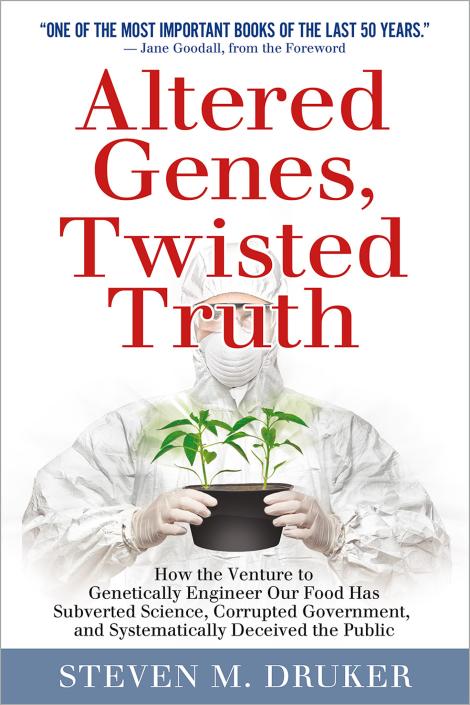 Altered Genes,Twisted Truth, (2015) by Steven Druker is the product of 15 years of investigation and research.
Altered Genes,Twisted Truth, (2015) by Steven Druker is the product of 15 years of investigation and research.
- The risks of GMOs have been systematically misrepresented in order to avoid government regulations and consumer awareness.
- FDA officials are shown to have broken the law and lied about the facts.
- FDA officials are shown to have disregarded pervasive safety concerns among FDA scientists who repeatedly protested the classification of genetically engineered seeds as “substantially equivalent” to conventional breeding.
- FDA scientists emphasized the need for rigorous safety tests, noting that “the processes of genetic engineering and traditional breeding are different…they lead to different risks.” But such tests have never been done.
- The scientists had warned FDA officials repeatedly that these seeds might create allergies, toxins, new diseases and nutritional problems.
- The bureaucrats ignored the scientists, and the scientists’ warnings were concealed and denied.
- GMOs entered the US food supply with virtually no safety studies. (The documents are posted here)
FDA covered-up disaster caused by the first genetically engineered ingestible product
The first biotech engineered ingestible product to enter the US market was a food supplement; the amino acid L-Tryptophan that in 1989 caused an epidemic of EMS (eosinophilia-myalgia syndrome) a rare debilitating disease characterized by overproduction of white blood cells leading to severe muscle pain, physical weakness, fever, breathing difficulties, and pneumonia; in some cases complete paralysis, affected 1,500 people, 30- 50 of who died. Each of them had ingested genetically engineered L-Tryptophan, a key amino acid in the production of serotonin and the functioning of the brain. The epidemic was linked to a single source of GE L-Tryptophan produced by Showa Denko. (Journal of Rheumatology, 1996)
Evidence, including a memo in FDA’s secret files acknowledged that genetic engineering could not be ruled out as the cause of that epidemic: “toxicants ordinarily produced at low levels in a plant may be produced at high levels in a new variety as a result of such occurrences (e.g., using recombinant DNA techniques, also known as genetic engineering) (FDA, “L-Tryptophan Recall,” November 17, 1989; “FDA’s Regulatory Response to L-Tryptophan Situation,” July 18, 1991; FDA Statement of Policy: Foods Derived From New Plant Varieties: Federal Register, May 29, 1992; Cited by Institute for Responsible Technology; “Is Genetically Engineered Food A Fraud?” National Geographic, 2015)
1995: a study by scientists at Japan’s Research Institute for Food Science, reported that genetically engineered yeast produced an accumulation of a highly toxic compound in yeast cells, compared to non-transformed control cells. The authors concluded,
“These results illustrate that careful thought should be given to the potential metabolic products and their safety when a genetically engineered yeast is applied to food-related fermentation processes.” (International Journal of Food Sciences and Technology)
Michael Antoniou, PhD., Reader in Molecular Genetics in the U.K., noted that the EMS example “illustrates that a product derived from a GE organism can be devoid of genetic material, but can still unexpectedly contain potentially harmful alterations to a GE product, a novel toxin or elevated levels of a known hazardous substance.” (“Is GM Food Devoid of DNA Safe?” (1996)
“The data meet other [ ] criteria for inferring a causal relationship. Consistent findings were found in multiple independently conducted studies. There was a dose-response effect, with risk of illness increasing as a function of the amount of tryptophan consumed… the multiple independently conducted studies effectively rule out the possibility that the tryptophan-EMS association was the result of chance…The incidence of EMS in the United States diminished abruptly once LT containing products were recalled.” (1996 CDC report in the Journal of Rheumatology)
The FDA, which admits that its policy is “to foster biotechnology” issued deceptive statements in an effort to convince the public that genetic engineering was blameless in the tragic results that ensued from genetically engineered L-tryptophan. James Maryanski, FDA’s biotech policy coordinator stated: “We have no evidence of that, none whatsoever that the technique causes those kinds of effects, differently from other methods of modifying organisms.” (1996) Deceptive statements such as this by high ranking FDA officials, lent authority to the claim routinely made by proponents of GMOs that none of its products has ever been linked to a health problem. The collusion between the FDA and the GE industry controls the information disseminated by the media; the result is mass public deception. Most Americans aren’t even aware that such a genetically engineered catastrophe ever happened. Nor are they aware of a ruling by a U.S. Court of Appeals that fundamentally undermined FDA’s GE policy.
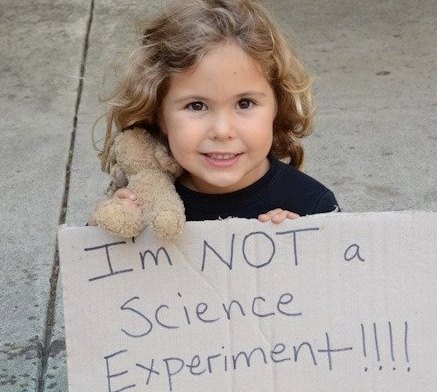 In 2010, the U.S. Circuit Court of Appeals overruled FDA’s position
In 2010, the U.S. Circuit Court of Appeals overruled FDA’s position
FDA maintains that GMO food products are “substantially equivalent” — no different from naturally grown foods. The court dismissed FDA’s claim as “belied by the record.” The court ruled that a “compositional difference” exists between genetically engineered milk and natural milk:
“a compositional difference does exist between milk from untreated cows and conventional milk...the use of rbST in milk production has been shown to elevate the levels of insulin-like growth factor 1 (IGF-1), a naturally-occurring hormone that in high levels is linked to several types of cancers, among other things….milk from treated cows contain higher somatic cell counts, which makes the milk turn sour more quickly and is another indicator of poor milk quality.” (U.S. Circuit Court of Appeals Ohio, Sept. 2010)
[Read: A GMO Debacle: Growth Hormone Contaminated Milk]
Despite the court ruling, FDA has continued to cling to the Monsanto crafted FDA policy. Instead of requiring GMO products to be labeled, the FDA requires labels that identify non-GMO products, such as natural milk products, to include the following patently false statement: “The FDA has determined that no significant difference has been shown between milk derived from cows given [rBGH /rBST] and non-[BGH] supplemented cows.”
 An estimated one billion pounds of pesticides are sprayed on US crops every year. The documentary “Genetic Roulette” (2012) by Jeffrey Smith, makes the case that pesticides that are built into plants are all over the food chain: as cows eat GMO corn and then we eat those GMO-fed cows (or pigs, chickens, whatever). Traces of GMO pesticides have been found, for instance, in human kidneys and in breast milk. There seems to be a correlation between the introduction of GMO food into our food supply and an increase of gut health issues such as Crohn’s Disease and even diabetes. The documentary features interviews with physicians, scientists, farmers, dietitians, chefs and educators all of who are concerned about problems related to genetically engineered foods. The documentary notes that the epidemic increase in cancer, obesity, allergies, autism, diabetes, asthma, and intestinal disorders, are the same conditions that animals eating genetically engineered foods developed in the lab.
An estimated one billion pounds of pesticides are sprayed on US crops every year. The documentary “Genetic Roulette” (2012) by Jeffrey Smith, makes the case that pesticides that are built into plants are all over the food chain: as cows eat GMO corn and then we eat those GMO-fed cows (or pigs, chickens, whatever). Traces of GMO pesticides have been found, for instance, in human kidneys and in breast milk. There seems to be a correlation between the introduction of GMO food into our food supply and an increase of gut health issues such as Crohn’s Disease and even diabetes. The documentary features interviews with physicians, scientists, farmers, dietitians, chefs and educators all of who are concerned about problems related to genetically engineered foods. The documentary notes that the epidemic increase in cancer, obesity, allergies, autism, diabetes, asthma, and intestinal disorders, are the same conditions that animals eating genetically engineered foods developed in the lab.
Are there safer alternative methods for increasing efficiency in agriculture?
The Union of Concerned Scientists cites two alternatives to the corporate industrial strategy that focuses on increasing the output of a single crop with intensive use of herbicides. That strategy has already caused an epidemic of herbicide-resistant “superweeds” while it has failed to increase crop output. Instead, the Union of Concerned Scientists recommends:
- Breeding produced through the plant’s natural reproductive process;
- Ecological farm management, which optimizes the performance of the entire system of biophysical components.
“The biotechnology industry acknowledges that GE is a complement to breeding, but markets their seed on the strength of its GE traits. The industry has used its formidable marketing and lobbying resources to ensure that its products—and the industrial methods those products are designed to support—continue to dominate both the seed marketplace and the policy conversation, at the expense of ecologically based, diverse farming systems.
Thus far, however, GE applications in agriculture have only made the problems of industrial monocropping worse. Rather than supporting a more sustainable agriculture and food system with broad societal benefits, the technology has been employed in ways that reinforce problematic industrial approaches to agriculture.” (Union of Concerned Scientists)
Read AHRP posts: GMO Crops Have Failed to Lift Yields and Ease Pesticide Use
How Monsanto Rigged the System through politics and propaganda
A GMO Debacle: BGH Contaminated Milk
GMOs containing herbicide glyphosate: UNSAFE at any plate
